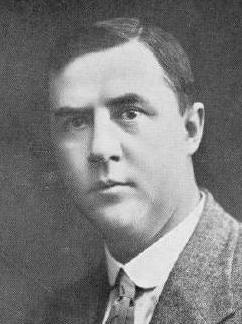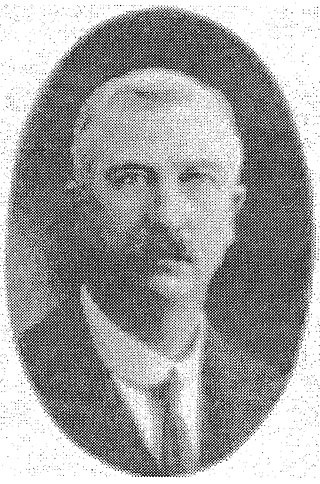Related Research Articles

Frank Wilson, was the ninth Premier of Western Australia, serving on two separate occasions – from 1910 to 1911 and then again from 1916 to 1917.

John Scaddan, CMG, popularly known as "Happy Jack", was Premier of Western Australia from 7 October 1911 until 27 July 1916.

Edward Bertram Johnston, known as Bertie Johnston, was the Western Australian Legislative Assembly member for Williams-Narrogin from 1911 to 1928, and a Senator from 1929 until 1942. His resignation from the Australian Labor Party in 1915 made possible the defeat of John Scaddan's Labor government in Western Australia.

Sir Henry Bruce Lefroy was the eleventh Premier of Western Australia.
The Electoral district of Brown Hill-Ivanhoe was a Legislative Assembly electorate in the state of Western Australia. It covered part of the Goldfields city of Boulder, near Kalgoorlie, and neighbouring mining areas. It was created at the 1911 redistribution out of the former seats of Brown Hill and Ivanhoe, and was first contested at the 1911 election. It was abolished in the 1948 redistribution, with its area split between the neighbouring electorates of Boulder and Hannans, taking effect from the 1950 election. The seat was a very safe one for the Labor Party.

The Throssell Ministry was the second Ministry of the Government of Western Australia. It succeeded the Forrest Ministry on 15 February 1901 after Sir John Forrest's move from state to federal politics, and was led by Forrest's choice of successor, George Throssell. However, no clear winner emerged from the April 1901 state election, and rather than test his support in the Assembly, Throssell and the Ministry he led resigned on 27 May 1901, allowing the Leake Ministry led by Opposition Leader George Leake to take office.

Robert Rivington Pilkington was an Irish politician who sat in the Western Australian Legislative Assembly and the British House of Commons.

Philip Collier was an Australian politician who served as the 14th Premier of Western Australia from 1924 to 1930 and from 1933 to 1936. He was leader of the Labor Party from 1917 to 1936, and is Western Australia's longest-serving premier from that party.
This is a list of members of the Western Australian Legislative Council from 22 May 1916 to 21 May 1918. The chamber had 30 seats made up of ten provinces each electing three members, on a system of rotation whereby one-third of the members would retire at each biennial election.
The Rason Ministry was the 8th Ministry of the Government of Western Australia and was led by Ministerialist Premier Hector Rason. It succeeded the Daglish Ministry on 25 August 1905 after the previous Labor minority administration fell on a vote of no confidence. On 7 May 1906, it was followed by the Moore Ministry led by Minister for Lands Newton Moore.
The Moore Ministry was the 9th Ministry of the Government of Western Australia and was led by Ministerialist Premier Newton Moore. It succeeded the Rason Ministry on 7 May 1906 after Rason resigned to accept an appointment as Agent-General for Western Australia in London. It was succeeded by the First Wilson Ministry on 16 September 1910 after Moore resigned for exactly the same reason.
The First Wilson Ministry was the 10th Ministry of the Government of Western Australia and was led by Ministerialist Premier Frank Wilson. It succeeded the Moore Ministry on 16 September 1910 after Sir Newton Moore resigned to accept an appointment as Agent-General for Western Australia in London. The ministry was followed by the Scaddan Ministry on 7 October 1911 after the Ministerialists lost government at the state election held four days earlier.
The Scaddan Ministry was the 11th Ministry of the Government of Western Australia and was led by Labor Premier John Scaddan. It succeeded the First Wilson Ministry led by Ministerialist Frank Wilson on 7 October 1911 after the decisive result of the state election held four days earlier, which had produced the State's first majority Labor government.
The Lefroy Ministry was the 13th Ministry of the Government of Western Australia and was led by Nationalist Premier Sir Henry Lefroy. It succeeded the Second Wilson Ministry on 28 June 1917 due to most members of the former Liberal Party, of which the previous Premier, Frank Wilson, had been the leader, pledging allegiance to the new party. The Lefroy Ministry, which was the first Coalition ministry in Western Australia, was also the only Ministry of a non-Labor government to be chosen by caucus.
The Colebatch Ministry was the 14th Ministry of the Government of Western Australia and was led by Nationalist Premier Hal Colebatch. It succeeded the Lefroy Ministry on 17 April 1919 after Sir Henry Lefroy's resignation as premier. Colebatch, a member of the Legislative Council and the first from that chamber to ever be asked to form a ministry, had the problem of finding a conveniently-located country seat which was not held by the Country Party. Before he could consolidate his leadership, his handling of the "Battle of the Barricades" on the waterfront severely damaged his standing and he stood aside. On 17 May 1919, the First Mitchell Ministry was formed by the Minister for Lands, James Mitchell.
The First Mitchell Ministry was the 15th Ministry of the Government of Western Australia and was led by Nationalist Premier James Mitchell. It succeeded the Colebatch Ministry on 17 May 1919 after the collapse of Hal Colebatch's brief service as Premier. It assumed a stability which had been absent from Western Australian politics since the 1914 election. The ministry was followed by the Collier Ministry on 15 April 1924 after the Nationalist coalition lost government at the state election held on 22 March.
Rufus Henry Underwood, better known as Henry Underwood, was an Australian politician who represented the Western Australian Legislative Assembly seat of Pilbara from 1906 until 1924. Initially active in the Labor Party and a minister without portfolio in the Scaddan Ministry, he left the party during the conscription crisis in 1917 and thereafter represented the National Labor Party for the rest of his political career.

The First Collier Ministry was the 16th Ministry of the Government of Western Australia and was led by Labor Premier Philip Collier. It succeeded the First Mitchell Ministry on 16 April 1924, following the defeat of the Nationalist government at the 1924 election on 22 March.
The Second Mitchell Ministry was the 17th Ministry of the Government of Western Australia and was led by Nationalist Premier Sir James Mitchell. It succeeded the First Collier Ministry on 23 April 1930, following the defeat of the Labor government at the 1930 election on 26 March.

The Minister for Education and Training is the member of the Government of Western Australia responsible for maintenance and improvement of Western Australia's system of education, and is answerable to the Parliament for all actions taken by the Department of Education under their authority. The holder of the office is usually an elected member of parliament from the ruling party or coalition, presently Tony Buti of the Labor Party.
References
- Black, David; Bolton, Geoffrey (2001). Biographical Register of Members of the Parliament of Western Australia, Volume One, 1870–1930 (Revised ed.). Parliament House: Parliament of Western Australia. ISBN 0730738140.
- Black, David (1991). "Factionalism and Stability: 1911-1947". In Black, David (ed.). The House on the Hill: A History of the Parliament of Western Australia 1832–1990. Perth, Western Australia: Parliament of Western Australia. ISBN 0-7309-3983-9.
- Bolton, Geoffrey; Mozley, Ann (1961). The Western Australian Legislature, 1870-1930. Canberra: Australian National University. (no ISBN)